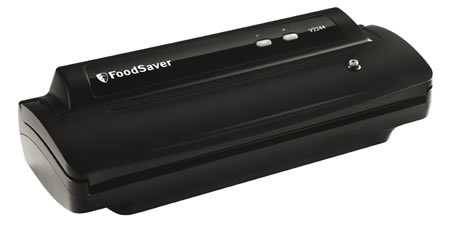Lean in and I’ll tell you the most important secret to eating well: Get to know your butcher.
That’s my favorite butcher wearing an AmazingRibs.com cap, Dario Cecchini in his 200-year-old butcher shop in Panzano-in-Chianti, Italy. OK, I don’t see him often, but I do know the head butchers at all three groceries near me, and they know me, too.
In my blue-collar neighborhood in a suburb just west of Chicago, there used to be many butcher shops. The big grocery stores and the big department stores that carry meat, like Walmart and Target, have put them all out of business. In the past decade I have lost two great butcher/craftsmen, put out of business by the big box stores. The small independent neighborhood butcher is almost extinct in the US.
Despite the disappearance of the small family butcher shop, some new ones have sprung up in ethnic neighborhoods. Kosher and halal diets require special butchering techniques, so in Jewish and Middle Eastern neighborhoods, you can still find real butchers who will custom cut for you. African and Mexican cooking calls for cuts not normally found in the supermarkets, so these neighborhoods often have real artisans on hand, not to mention wonderful exotic ingredients to broaden your horizons.
You can often find quality meats at farmer’s markets, usually from nearby farmers, often hormone-free and humanely raised.
Many grocery stores get pre-cut meat shipped to them from a central warehouse. But some still have butchers on premise. Find them. The head butcher is usually on duty early morning through early afternoon. They usually get in early to greet the delivery trucks. Stop at the counter and ask for the head butcher or the assistant. Don’t be surprised if your butcher is a woman. One of mine is, a grad from Michigan State. Introduce yourself. Chat her up. Swap recipes. Tell her about AmazingRibs.com. Get the direct phone number of the butcher department. Ask her about her favorite cuts and what she thinks are some of the best meats she gets. Ask if she can special order USDA Prime grade beef or less popular cuts like beef tri-tip or whole packer briskets. Set yourself apart from the crowd.
Many big grocers get fresh meat every day, but some don’t. Ask about delivery dates and times. Unless you’re on the coast, fish is usually not delivered daily and freshness is more important in fish than any other meat.
One day, bring in a slab of ribs you’re proud of and leave it for the butcher staff to enjoy with lunch. Show them you’ve got the chops and they’ll get you the best chops.
Soon after you meet her, while she can still taste those ribs, call in an order. Most groceries don’t stock USDA prime grade so if you can afford it, ask her to get you some. Or ask her to look for “top choice”. That’s the best grade of USDA choice, usually the best in the house. Click here to learn more about beef grades. Don’t be in a hurry, and be willing to pay full price for the best cuts. Ask her to cut you some ribeyes 1 1/2″ thick, my favorite size, big enough for two. My butcher has been known to set aside the pick of the litter for me, even when it is on sale.
Not all meat is the same. Get to know your meat cuts and grades, but don’t be afraid to ask your butcher for help. Baby backs cost more than spare ribs, but spare ribs are usually richer and juicier because they have more marbling and more connective tissue. But baby backs have better marketing (remember the Chili’s jingle?). Filet mignon is the most tender beef cut, but ribeye is more flavorful. I’ve written articles on the different cuts of beef and the different cuts of pork and the different cuts of lamb.
Pick meat carefully. Don’t just grab anything. Linger over the meat counter and concentrate. Look at the evenness of the cut. If one end is thinner it will overcook. Look at the exterior fat. You’ll want to remove most of it, so find cuts with the least waste. Look at the marbling. Pick the one with the best marbling. If you don’t know what marbling is, read my article on meat science. Heck, even if you do know marbling, read that article.
Open display cases work fine, but the bottom pieces may be cooler than the top pieces. Compare the different packages. Look for liquid in the package. This is called purge and is often a sign that the meat has been frozen and thawed. This moisture and flavor cannot be replaced. Avoid meat with a lot of purge.
Pay attention to the dates on packaging. “Sell By” date tells the store when to remove products from the shelf. “Best If Used By” or “Use By” dates tell you when you should eat or freeze the product. These dates are not related to safety, just quality. And you can no longer rely on the color of meat if it is prepackaged because some grocers now sell red meat packed in a carbon monoxide atmosphere with special plastic films on the package to prevent browning. Remember, the dates are meaningless once the package has been opened and exposed to air and bacteria.
There are a few days right after slaughter when rigor mortis makes the meat tough, but that is gone by the time the meat arrives in your store. As meat ages, enzymes and oxidation change the flavor. Pick the most recently cut meats. Yes, beef can improve with aging, but it has to be aged properly. Beef seems to be best after about 28 days only if it is packed in Cryovac, that thick, vacuum-sealed plastic. It will not keep that long if it is just shrink-wrapped onto a styrofoam tray with air inside. Here’s an article with more on aging beef. For pork, poultry, and most other meats, the fresher the better. They do not improve with age.
Read the fine print when you shop. Try to avoid meats labeled “enhanced”, “flavor enhanced”, “self-basting”, “basted”, “pre-basted”, “injected”, or “marinated”. They can have salty brines injected, as much as 10 to 15% by weight. Why pay 10 to 15% more for salt water? In addition, kosher meat has been heavily salted in the koshering process and although the salt is rinsed off the surface, much of it seeps in. Many of these salted meats feel mushy when cooked because the salt denatures the proteins. You do not need these additives if you prep and cook the meat properly. If you want salt, you can add it yourself. If you cannot find a butcher who sells unenhanced meat, ask if she can special order it for you.
Shop safely. Most microbes do not grow well at temps below 40°F, but an E-coli population on the surface of a steak can double every hour at room temp. Make grocery shopping your last stop when you’re out running errands so groceries do not sit in your car any longer than they have to, and when you are in the grocery, make the meat counter the last stop. Put meat in the coolest part of your car. If your grocery is more than 30 minutes from home, on hot days bring an insulated box or bag for carrying refrigerated products.
Freezing meat
Use or freeze meat soon after you get it home. Have you noticed what happens when you thaw frozen meat? It can purge a lot of juice. That’s because freezing forms sharp ice crystals that break open meat fibers. When those juices escape, there’s no way to get them back in. You end up with dry meat. Frozen meat can be fine, especially if it is flash or blast frozen, a process that freezes it so quickly that the crystals remain small, do less damage, and create less purge.

If you must freeze meat, keep in mind that air is the enemy. Oxygen can speed degradation of fats, introduce odors, and it can promote discoloring and chemical change from freezer burn. I highly recommend vacuum devices like the FoodSaver products. You place food in a plastic bag, insert the open edge into the machine, and it sucks out the air and seals the bag. It can double or triple the time food stays fresh tasting in the freezer. If you don’t have one of these nifty gadgets, put meat in a zipper bag, slip the closed end into a pot of cold water and let the water pressure push the air out the top, zipper end. Then zip the bag. This method takes a little practice, but it works. If you don’t have zipper bags, take the meat out of those plastic trays and rewrap it tightly with plastic wrap and then with foil. Plastic wrap is permeable and will allow moisture to escape and allow air in, so it is not enough by itself.
Another important step is to freeze the meat rapidly so there are smaller ice crystals than if you freeze it slowly. To freeze meat rapidly, bag it, remove the air, and submerge it in ice-water for a few hours. Water is a great conductor of heat and it will chill the meat quickly to just above freezing. Then place it on a rack in your freezer so there can be airflow all around, preferably right in front of the fan. Don’t lay it on top of other frozen foods. Then wrap it tightly in foil. Frozen beef will stay pretty fresh tasting for six months or so, while pork, lamb, fish, and poultry can start tasting funky after three months or so. Click here to read my article about thawing foods.
For more, read my article on food safety for tips on shopping for meat that won’t kill you or your guests.



High quality websites are expensive to run. If you help us, we’ll pay you back bigtime with an ad-free experience and a lot of freebies!
Millions come to AmazingRibs.com every month for high quality tested recipes, tips on technique, science, mythbusting, product reviews, and inspiration. But it is expensive to run a website with more than 2,000 pages and we don’t have a big corporate partner to subsidize us.
Our most important source of sustenance is people who join our Pitmaster Club. But please don’t think of it as a donation. Members get MANY great benefits. We block all third-party ads, we give members free ebooks, magazines, interviews, webinars, more recipes, a monthly sweepstakes with prizes worth up to $2,000, discounts on products, and best of all a community of like-minded cooks free of flame wars. Click below to see all the benefits, take a free 30 day trial, and help keep this site alive.
Post comments and questions below
1) Please try the search box at the top of every page before you ask for help.
2) Try to post your question to the appropriate page.
3) Tell us everything we need to know to help such as the type of cooker and thermometer. Dial thermometers are often off by as much as 50°F so if you are not using a good digital thermometer we probably can’t help you with time and temp questions. Please read this article about thermometers.
4) If you are a member of the Pitmaster Club, your comments login is probably different.
5) Posts with links in them may not appear immediately.
Moderators